The art of decorating cloth using wax and dye is an age-old tradition and has been discovered in many parts of the world. However, the development of the technique to the highly sophisticated and intricate form known as batik first took place on the island of Java, principally in and around the royal cities of Yogyakarta and Surakarta (usually known as Solo). There are batik-making traditions in many parts of Indonesia and further afield, but Javanese batik is the quintessential example of the form.


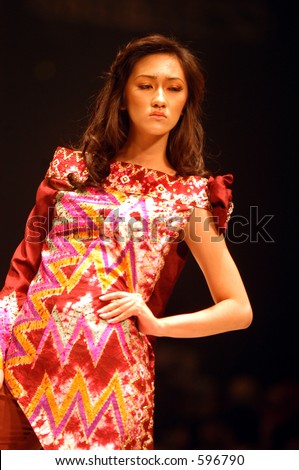
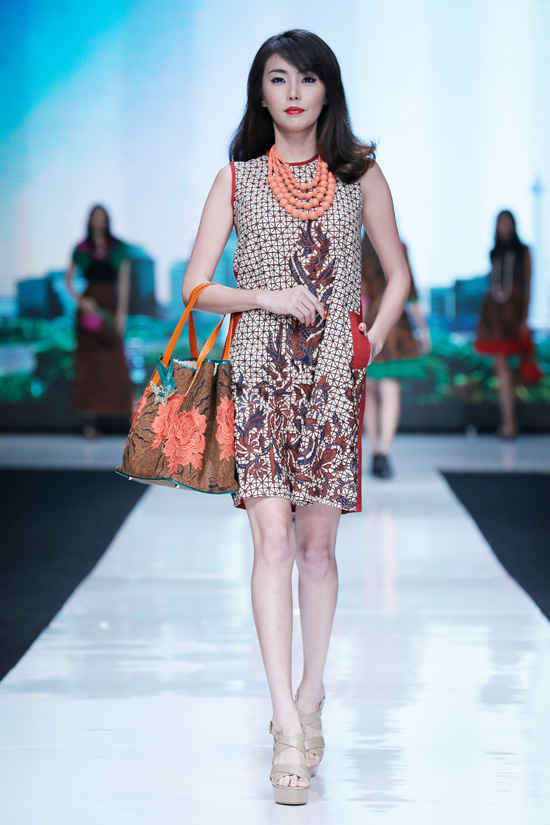



The oldest batik-making tradition in Java comes from the kraton (royal courts) of the cities of Yogyakarta and Solo in Central Java. Javanese royalty were great patrons of the arts, including puppetry, gamelan orchestras, silverwork, and batik production. Certain patterns were reserved for the royal family, and batik played an important role in Javanese culture and tradition. Batik from Yogyakarta traditionally uses colors such as black, brown, indigo and dark yellow, on a white background, while batik from Solo features dark yellow as the background color. The royal courts of both cities still house factories for the production of traditional batik, and host markets where fine batik can be bought.


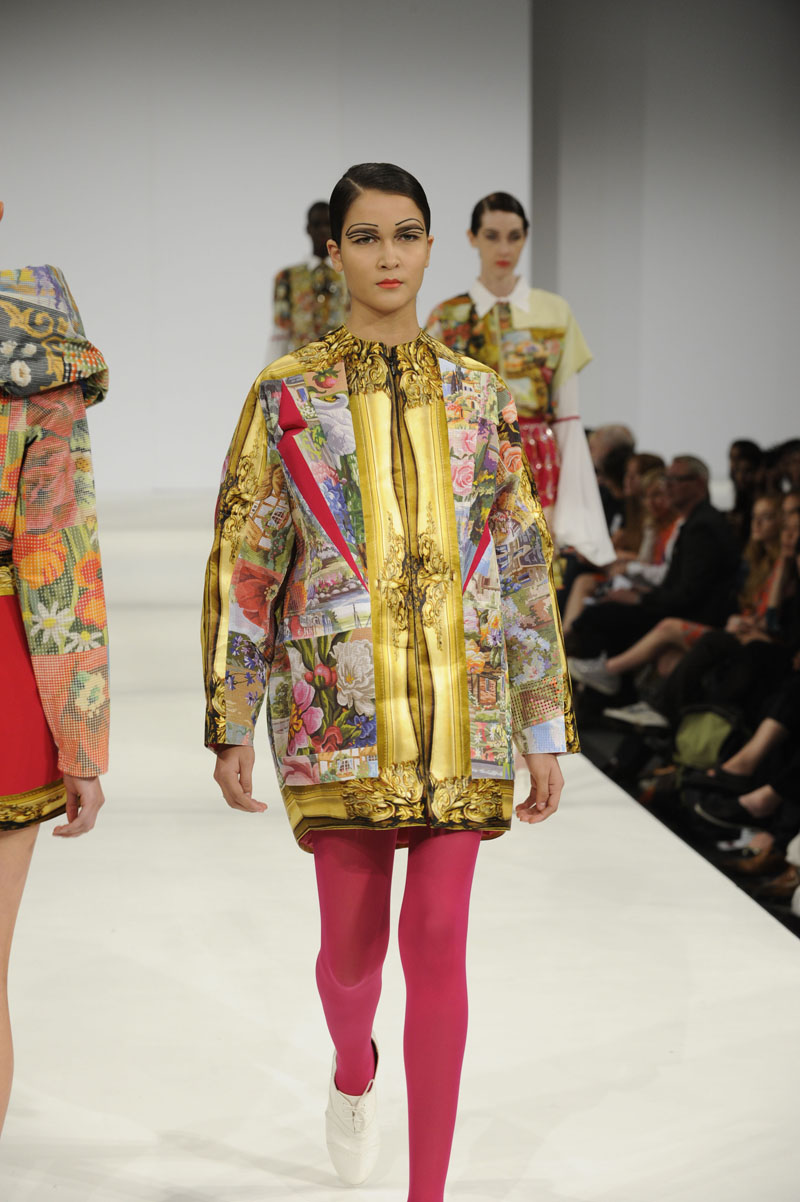


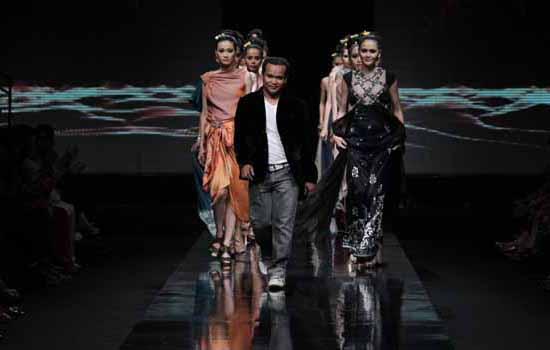
The colors used in traditional batik were those of natural dyes but skilled artisans were able to mix the dyes carefully to produce subtle variations. The shade of the color depended on how long the cloth was dipped in the dye. Many of the classic patterns associated with Indonesian batik originate in the batik produced in the Javanese kraton. There are two main types of pattern used: geometric, and free-form design which is usually a stylized depiction of nature, such as leaves or waves. The majority of the Indonesian population is Muslim and Islam prohibits the accurate portrayal of people or animals.



The most common geometric patterns used are kawung, a series of intersecting circles that probably represent the fruit of the sugar palm; parang, diagona l rows of blade-like repeating patterns, alternating in color; and ceplok which is the name given to patterns made of geometric shapes. The kawung and parang designs were originally reserved for the royal courts of Solo and Yogyakarta. The northern coasts of Java were more open to foreign influences through maritime trading, particularly from the Chinese. Batik produced in these areas is known as pesisir (coastal) batik, and is characterized by bright vibrant colors and the use of Chinese-influenced motifs such as the dragon, phoenix, lotus and flowers. Distinct styles of pesisir batik are produced in Cirebon, often featuring a cloud pattern; Madura (an island off the coast of Java), which uses deep vibrant colors such as red and green, and spear-like motifs; and Pekalongan, the still-thriving center of pesisir batik production, which produces batik in bright colors using floral motifs showing Chinese and Dutch influence. West Java is also renowned for the production of batik, with several distinct styles.


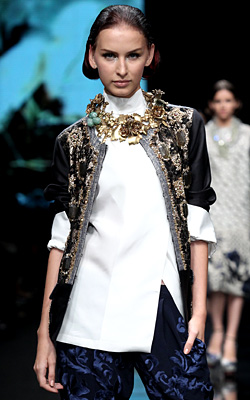





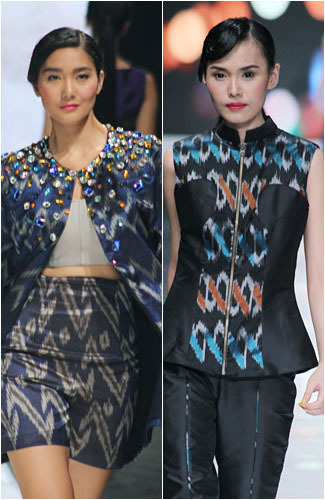


This area is home to the Sundanese people. Sundanese batik utilizes naturalistic patterns such as flowers, plants, birds and butterflies. The traditional production centers for Sundanese batik include Ciamis, featuring simple designs in black, white, and dark yellow; the small town of Garut, which produces traditional Javanese batik in distinct colors such as dark red, dark green and purple on an ivory background; and the region of Banten in the northwest corner of Java, characterized by pastel colors. The Japanese occupation of Java in World War II inspired a style known as Java Hokokai batik which is notable for its intricate detail and Japanese-inspired motifs such as cherry blossoms, butterflies, and chrysanthemums. Java Hokokai batik usually included two separate designs on one piece of cloth: a legacy of wartime scarcity. The island of Sumatra is also home to batik production. The eastern coastal province of Jambi had ancient trade links with the north coast of Java and produces a similar style to pesisir batik. The Minangkabau people from the highlands of West Sumatra use clay as a dye for the cloth, which often features only two colors and floral themes. Batik from the staunchly Islamic province of Aceh at the northern tip of Sumatra features heavily stylized depictions of flora and fauna and geometric shapes in line with religious principles, and bright colors such as pink and red are used.








Batik production was introduced to Bali much more recently than in other areas of Indonesia, mainly in response to the demands of the tourist industry. Balinese batik artisans often combine the wax-resist method of traditional batik with the local tie-dye technique known as ikat, which allows for the use of subtle shading of color. The key areas for the production of batik in Malaysia are on the east coast of the Malay peninsular and in the southern province of Johor. Batik-making traditions were most likely brought to Malaysia by sailors and traders, and later by Javanese and Sumatran immigrants. Malaysian batik shows influence from both Javanese kraton batik and the pesisir style of Jambi. However, Malaysian artisans are less likely to use the tjanting to apply the wax; instead brush painting is used to create the design on the cloth and add the color. This, combined with the use of lighter and more vibrant colors makes for a distinct departure from traditional Indonesian batik. The influence of Islam in Malaysia means that motifs such as leaves and flowers dominate, along with geometric shapes, including spirals.










Batik (often modernized and turned into items of high fashion) is becoming an increasingly important part of Malaysian cultural identity and is heavily promoted by the government. Use of the dye-resist method in China dates back to the sixth century. Batikis still made in Guizhou Province, in the south-west, by the Miao, Bouyei and Gejia ethnic groups, primarily for traditional costumes. The patterns are drawn using a tool similar to the tjanting, on white cloth which is then dyed blue or indigo. Traditional Guizhou batik is only blue/indigo and white, and utilizes a spiral design symbolizing the horns of the water buffalo, although over the centuries other designs such as flowers, butterflies and dragons, and a greater variety of colors have been introduced. In the central Asian republic of Azerbaijan, a batik-style method is used to create and decorate women's silk headscarves, known locally as kelagai. The art form died out when the country was under Soviet occupation but was revived after independence in 1991, and is becoming increasingly popular as a symbol of national identity and as a fashion item.




There are ancient traditions in many parts of sub-Saharan Africa of using the resist method for dyeing cloth: such as the Yoruba people of West Africa who used a cassava paste to draw the design, either free-hand or with a stencil. In the 19th century, Dutch traders and colonial administrators introduced the Javanese wax method, and it was quickly adapted to African designs and color schemes.
The traditional methods of producing batik are alive and well in many parts of the world. However, contemporary fashion designers are increasingly turning to batik as an inspiration and as a means of production. Much of this modern batik draws inspiration from tradition but uses different motifs, colors, types of wax, and other experimental methods, such as computer-aided design. In addition to fabric and clothing, batik is being used as a medium for art, furniture, and ceramics, which should help widen its influence in the modern world as a beautiful and accessible art form which is firmly connected to the past but still retains cutting-edge relevance.








